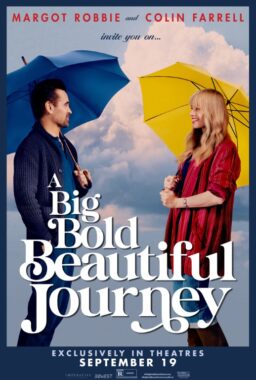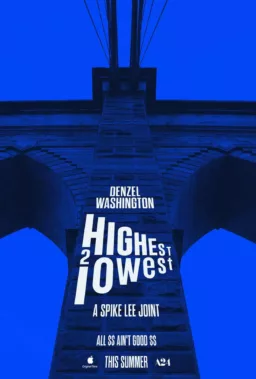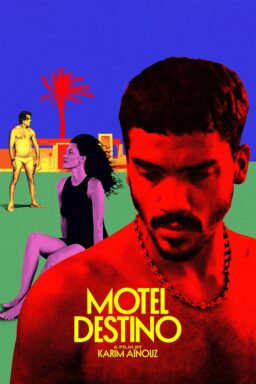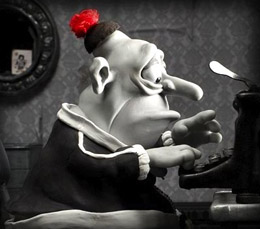 An old friend and I reunited for the first time in 13 years in Washington, DC last month, and the talk eventually turned to Facebook, the primary way we’ve managed to keep in touch, at least recently. I have a particular trait, usually reserved for after a night out on the town, by which friends can easily identify the level of my joviality, when I post videos of classic rock songs. Despite my assertion that a certain amount of fastidiousness should be necessary when it comes to sharing links on Facebook, I tend to disregard my own advice and post widely popular songs by legendary bands, for which I apologized to my friend.
An old friend and I reunited for the first time in 13 years in Washington, DC last month, and the talk eventually turned to Facebook, the primary way we’ve managed to keep in touch, at least recently. I have a particular trait, usually reserved for after a night out on the town, by which friends can easily identify the level of my joviality, when I post videos of classic rock songs. Despite my assertion that a certain amount of fastidiousness should be necessary when it comes to sharing links on Facebook, I tend to disregard my own advice and post widely popular songs by legendary bands, for which I apologized to my friend.
She suggested something rather interesting, which I’ve since thought about at length. “These songs,” she said, “have ingrained themselves in your psyche, and, in fact, society. Despite occasional moments of discovery, what they’re offering is familiarity. You know exactly what you’re going to feel when you hear them, and that sense of intimacy is comforting.” These songs have become archetypes in themselves, not literally, for archetypes shun that sort of classification, but in what they suggest, working, as they do, as sensual reminders.

There’s a reason I am telling you all this (and not just as a discursive mea culpa to my Facebook friends for filling their feeds with The Beatles and the Stones). During my run the other day, I was thinking about my list of my top ten films of 2010, when I realized something about my favorite film of the year. Many had made various comparisons between its anti-hero and others of his ilk from the history of cinema, but a totally different analogy occurred to me as an unmistakable guitar riff echoed in my head. It wasn’t too late when a natural juxtaposition between other films on this list and various classic songs became apparent. You’ll see what I mean.
But, before I go on, a brief explanation. When I wrote, earlier this year at The House Next Door, that going to the movies in Istanbul was an exercise in frustration and dread, I was referring, mainly, to the actual experience of attending a screening. Inconsiderate cinema patrons are a universal scourge (if you use a mobile phone during a film, there are no two ways about it, you are an asshole), but fairly unique to Turkey is the customary intermission during all films, not to mention the five, sometimes ten, minutes of adverts once the lights go down again afterwards. Add to this dim projection and even dimmer projectionists, by-products of the multiplex’s ubiquity, and what you end up with is akin to having a seven-course meal in a Glastonbury toilet.
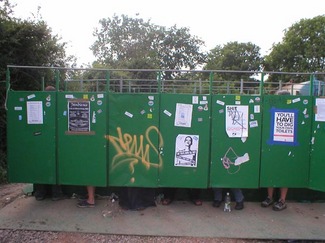
But another source of vexation that is more closely related to our subject at hand is the whimsical release schedule of Hollywood (possibly non-Turkish) movies. For a long time, until probably the late eighties, American and European films opened in Turkey a fair few years after their original release — understandable, since Turkey remained a fairly small market for foreign movies. As the Turkish economy expanded, so did distribution companies’ interests, and Turkish release dates started to coincide with, and sometimes pre-empt, American ones.
Until recently, that is, when the rise in popularity of, and thus demand for, Turkish films led to the emergence of a natural compromise of sorts in terms of available screens. While most Hollywood films still open almost simultaneously with America, others tend to take their time. And, unfortunately, the ones that do take their time to hit screens, if they ever do, are independent, arthouse, or smaller Hollywood fare (for example, “A Serious Man” opened August 6th 2010, a nice and round ten months after its US release).
All of which is by way of saying I have yet to see a number of possible Oscar contenders and other notable releases. I would be surprised if “127 Hours” ever cracked its way into my top ten list, averse as I am to Danny Boyle’s signature emotional tomfoolery, but I have high hopes for “Carlos,” “True Grit” and “Another Year,” and quite looking forward to “The King's Speech” (modern British history in film is kryptonite to my perfunctory cynicism towards Oscar bait). So, without further ado, and in reverse order, here are my top ten films of 2010.
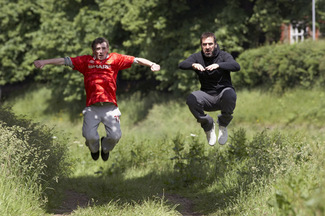
10. “Looking for Eric,” or I get by with a little help from my friends. Despite having a general sympathy toward his personal politics, I tend to find Ken Loach to be rather insufferable when, like your Noam Chomskys, and John Pilgers, and George Monbiots, he gets on a soap-box atop his high horse and refuses to get down. As such, otherwise solid films like “It’s a Free World” or “Land and Freedom,” have failed to invade my conscience once the initial appreciation subsided.”
Not the case here, an intimate portrayal of desperation, and how crucial the power of community is in turning someone from a loner into, ironically, an individual. The characters here are not fighting a front in the culture war, they’re simple people trying to make ends meet. Loach deftly weaves elements of hero worship and solidarity into a fascinating working-man’s fantasy, finding the universal in the local. Steve Evets shines as the lead, and the scene where Eric Cantona takes off his Eric Cantona mask is the probably the most delightfully metatextual moment of the year.

9. “Somewhere,” or Sunshine bores the daylights out of me. Sofia Coppola‘s quiet film finds Stephen Dorff as a Hollywood actor in the throes of an existential crisis, his glamorous yet ultimately meaningless life literalised in the opening shot, as he speeds around a racing track in circles, on a road to nowhere. His humdrum existence is punctuated by press events, ad hoc parties at his Chateau Marmont apartment, and the occasional perfunctory sexual tryst with his neighbours until he has to care for his precocious 11-year-old daughter (Elle Fanning).
At an effects studio, his face is covered with a plaster cast for old make-up, only two small holes for him to breathe in and out, and Coppola slowly zooms out of this amorphous, grotesque blob, the only sound his breath. Suddenly, we cut to the finished effect, as the “old man” gazes at himself in the mirror. Coppola has made a minor masterpiece here, in which uninflected moments of a lonely life in LA, shot mostly in soft focus and pastel colours by Harris Savides, combine to suggest alienation and lethargy. It’s Coppola’s best, and most personal, film.

8. “I Love You Phillip Morris,” or When the truth is found to be lies. Jim Carrey plays the real-life conman Steven Russell in Glenn Ficarra and John Requa‘s eccentric biopic, with Ewan Macregor as the titular object of Russell’s affections. The key to the film’s success is the unreliable narration, delivered with panache by Carrey in his greatest performance since “The Truman Show.”
Russell’s conman ways are presented here as a natural extension of his character, as with the leopard and his spots, so with a conman, who can’t stop himself from doing what he’s best at, and we, as the audience, are constantly fooled by the mock-sincerity of Carrey’s voiceover. Even the eponymous crush seems to be incidental. This sort of stuff is usually toe-curlingly sentimental, but the film never loses its edge, and reaches a sort of cynical apex when we find out where Russell eventually ended up.
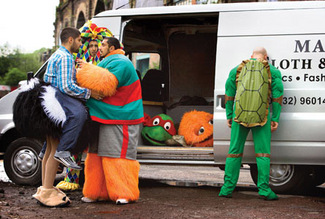
7. “Four Lions,” or, I am an antichrist, I am an anarchist. Writer-director Chris Morris and his fellow writers Jesse Armstrong and Sam Bain are the creators of the two finest British television shows of the past 25 years, Brass Eye and Peep Show, respectively. Their trenchant script, about a group of suicide bombers intent on putting their bodies upon the gears and upon the wheels, upon the levers, upon all the apparatus, and to make it stop, is relentlessly funny and sharp.
In his directorial debut, Morris brilliantly observes the bizarre incongruities in the lives of his bumbling “heroes”: on the way to that final act of revenge against the imperialist establishment, they psych themselves up not by listening to an Arabic sermon, but by Toploader’s soul-crushing ditty from yesteryear, “Dancing in the Moonlight.” Then again, that’s reason enough for anyone to want to blow themselves up.

6. “Winter’s Bone,” or, We were hungry, just barely alive. A detective story set in the cold, barren wastes of the Missouri Ozarks, where the 17-year-old Ree Dolly (Jennifer Lawrence) embarks on a zetetic quest for the whereabouts of her father, who’s put their house, such as it is, up for his bond. Morrison sizzles in the part, bringing the sort of rawness and charisma that’s hard to come by these days in an ingénue. John Hawkes, as her uncle Teardrop, assists Ree, somewhat reluctantly, in her search, and that Hawkes will fail to get any sort of recognition for his part will prove to be one of the real tragedies of this year’s award race, that is, if you care about that sort of thing (and I kinda, sorta do).
Director Debra Granik fashions an incredible sense of time and place, with the cold, poverty and hunger working as the real villains of the story. In a film of many spectacular moments, Ree’s eventual confrontation with the Sheriff (Garret Dillahunt, as with Hawkes, another Deadwood alum, with which the film has more than these two in common) is the true standout, and the final rite of passage.

5. “Mary and Max,” or, Trade a smile with someone who’s blue now. Written and directed by Oscar winner Adam Elliot, the claymation “Mary and Max” is the whimsical story of a pen-pal friendship between a lonely Australian girl called Mary (Bethany Whitmore, and, later, Toni Collette) and a lonely American man called Max (Philip Seymour Hoffman). Ignored by her parents, and lacking any friends at school, the eight-year-old Mary rips a page out of an American phone book at her local post office one day, and writes to Max, to ask him about where babies come from. Max, later diagnosed as suffering from Asperger’s Syndrome (questionable–he acts more like a high-functioning autistic), suffers a panic attack when he first reads the letter, then responds, in his own unique way. They start writing back and forth, and, very soon, a wonderful friendship is born. It will last decades.
The film owes a lot to Barry “Dame Edna” Humphries’s omnipresent narration, who has an uncanny line in detached yet sympathetic, and in moments of sudden death (which are aplenty), it is this very quality that rescues the film from almost unavoidable sappiness. Hoffman, his voice almost unrecognizable, does an equally impressive job with Max, as he moulds a three-dimensional mentally disabled character, which never resorts to a “Rain Man” or “Forrest Gump” clone. Some might say this is a dark film (for what it is, the film’s spectacularly colorful–New York’s noir cityscape in total contrast with the nostalgic sepia of Australia), but Mary and Max’s central theme of the importance of human connection left me with an overriding sense of happiness.

4. “Let Me In,” or, See, don’t ever set me free, I always wanna be by your side. A remake of Tomas Alfredson’s Swedish vampire horror “Let the Right One In” from 2008, “Let Me In” is probably the most American film of the year. Ronald Reagan’s infamous “Evil Empire” speech opens Matt Reeves’s masterful film, and religious imagery, be it little crosses and Jesus figures on the walls, or Owen’s (Kodi Smit-McPhee) mother taking solace in the Bible and wine, possibly in equal amounts, permeates, a key difference to the original’s secular tone. In my review of “Let the Right One In,” I wrote that it “it penetrated the very heart of what it would feel like being a vampire, consumed with madness and malice; sorrow and solitude.” Similarly, Reeves taps into the national psyche of early-Reaganite Americana, with trickle-down economics working hand-in-hand with an escalation in international tensions, all wrapped around a pseudo-Biblical us vs them rhetoric.
But it’s not just the subtext that’s different: unlike Alfredson, who told his story mainly in mastershots, Reeves uses uncomfortable close-ups of the characters, whose fear and apprehension ooze from the screen – both Abby (Chloe Moretz) and Owen are victims, but have different ways of dealing with it. And the film’s unique showstopper, an incredible car-crash viewed from inside the car, is one of the finest pieces of action film-making in the history of cinema. In a slight variation on a scene from the original, Owen wears a grotesque mask and taunts himself in the mirror, practicing for the day he would eventually stand up to the bullies in school, and his mirror image suggests the monstrous future ahead of him as Abby’s lover-cum-slave, a suggestion as eerie here as it was in the “Godless” original.

3. “Greenberg,” or What a drag it is getting old. Noah Baumbach‘s film, the second one in this list featuring a modern-day emotional Oblomov — once again set in LA and shot by Harris Savides – is a triumph, and provides Ben Stiller with a career defining role as an aging, torpid, misanthrope. It is as much about the divine Greta Gerwig‘s Florence as it is about Stiller’s Greenberg, the former on the cusp of lethargy, the latter in its full embrace. As selfish as he is self-deluded, Greenberg does not handle aging well: his shopping list has two items, whiskey and ice-cream sandwiches.
When his insistence to introduce a group of twenty-year-old cokeheads to the glory of Duran Duran is met with sarcastic derision, he blows his lid. He repels almost everyone with whom he gets in contact. In contrast (the older character is identified with his surname, the younger her first), Florence is emotionally available, but also scared. The generational divide is not the story here (there’s hardly any plot, and that’s a good thing), it’s just a fact of life. As a youth, you have dreams, Baumbach suggests, and even if they don’t work out, that’s not necessarily a bad thing. And no reason to be a douchebag. Noah Baumbach had already made a fine film in “The Squid and the Whale.” In “Greenberg,” he made an excellent one.
2. “The Ghost Writer,” or, Substitute your lies for fact. Based on Robert Harris‘s novel (who also wrote the script), Roman Polanski‘s tense and stylish thriller owes a lot to John Le Carre and Alfred Hitchcock. Ewan Macgegor turns on the charm as a boozing ghost writer-cum-sleuth, getting further entangled in a web of deception the further he investigates his subject, Pierce Brosnan‘s former British prime minister, an all-too-obvious analogue to Tony Blair. Alexandre Desplat’s magnificent Herrmannesque score builds up the suspense, and the summer house with its angular, cubist interiors, shadowy corners, and giant glass screens (overlooking a grey, languid vista) becomes a character of its own, like Manderlay. Glorious until the end, “The Ghost Writer” is Roman Polanski’s best film since “Frantic.”
Take a look at the following screenshots from the end of the film. Polanski keeps his camera steady, as we hear, off screen, a car crash. Then, the pages of the original manuscript the person was carrying start floating in the air. The true identity of the CIA agent in the British government will never be revealed. The bystanders are oblivious to the fact that history, and all its crimes, are slowly flying away from them as they are distracted by a momentary tragedy. It’s the year’s best final shot.





1. “The Social Network,” or that deaf, dumb, and blind kid…And we’re back where we started. It is always problematic to suggest a film captures the zeitgeist, since zeitgeist itself is a loose term. And if David Fincher‘s magnum opus has captured anything, it’s not so much the “spirit of the times” as it is the “spirit of the people.” Fincher’s film, from Aaron Sorkin‘s script, is all about connections, from the micro to the macro, and, as my dear friend Jim Emerson notes, works as a “digital” companion piece to the director’s “analog” “Zodiac.” It is a microcosmic view of the way people use Facebook: to connect and disconnect. To friend and unfriend.
And in the centre of it all is Jesse Eisenberg‘s Mark Zuckerberg. Fincher shows Zuckerberg in perennial disconnect, just as he fashions a tool that will keep society in constant connection. A force of nature, single-minded, and seemingly running on instinct, he is the modern day Tommy Walker. And he sure plays a mean pinball.

Honourable Mentions: “Dogtooth,” “Mother,” “Ondine,” “The Milk of Sorrow,” “Scott Pilgrim vs the World,” “The Other Guys,” “Piranha 3:D, ” “Shutter Island,” “Monsters.”
Ali Arikan is based in Istanbul, Turkey. His writing on film, music, television and culture appears on Slant Magazine’s official blog, The House Next Door, and Edward Copeland on Film. Follow him onTwitter at @aliarikan. He thanks his friends Wael Khairy for providing the screenshots for “Winter’s Bone” and “The Ghost Writer, and Glenn Kenny for suggesting “Substitute.”








